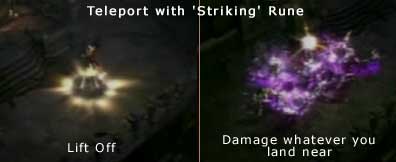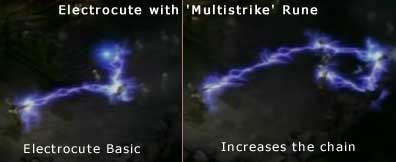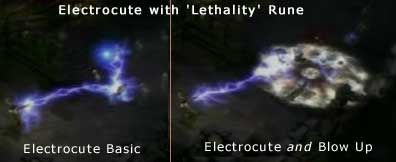Difference between revisions of "Skill Runes"
(→Rune History) |
(→Rune History) |
||
| Line 94: | Line 94: | ||
| − | ==Rune History== | + | ==Trivia (Rune History)== |
What do you really know about runes? The ones from our world come from the ancient Vikings, and their "futhark" (equivalence of our 'Alpha Bet(a)'). They allegedly hold magic powers, and the magicks of the 'runa' are still practised today. These practices, called "Seden", are of course done mostly as a pastime, but some forms of the old runes were used in proper form as late as early 20th century in the 'Dalarna' area of Sweden... | What do you really know about runes? The ones from our world come from the ancient Vikings, and their "futhark" (equivalence of our 'Alpha Bet(a)'). They allegedly hold magic powers, and the magicks of the 'runa' are still practised today. These practices, called "Seden", are of course done mostly as a pastime, but some forms of the old runes were used in proper form as late as early 20th century in the 'Dalarna' area of Sweden... | ||
| Line 111: | Line 111: | ||
[[Category:Items]] | [[Category:Items]] | ||
[[Category:Featured articles]] | [[Category:Featured articles]] | ||
| + | [[Category:Trivia]] | ||
Revision as of 11:05, 12 February 2009
Runes in Diablo 3 are small items that are socketed into skills, not items. The runes grant special bonuses to the skill. There are many types of runes, all found in various quality levels, and they work across skills -- each rune will (in theory) work in every skill, adding something similar to the skills.
Contents
D3 Runes vs. D2 Runes
Runes in Diablo III are nothing like the Runes found in Diablo II. In D2 there were 33 kinds of Runes, which were small items that had no use on their own, but that could be placed in item sockets to add various bonuses to the item. Certain combinations of runes could also be used to create RuneWords, very powerful items with pre-set stats.
In Diablo III, Runes are still small objects that must be placed in sockets to take effect, but in D3 the sockets are in skills, not items. (Items may also have sockets, but runes won't be used in them if they do.) Active skills have sockets in the skill tree interface, and when a valid rune is placed into the socket, the skill gains an appropriate bonus, depending on the type and quality of rune used. Bonuses vary greatly, depending on the skill and the type of rune used, and include such things as extra hits, extra damage, increased spell duration, and many more.
Rune Function
Skill Runes in Diablo III improve a character's active skills in various creative ways. Runes don't just add damage; they modify the skill in some way, making it more powerful and fun to use, as well as allowing for character customization. Runes can be used very strategically; different runes in the same spell will do things. For example, the Wizard skill Blizzard would gain different benefits from different runes. A few hypothetical Blizzard bonuses: more falling projectiles, longer duration, more damage per projectile, longer chill time, better to/hit, better chance of critical hit, and so forth. Also, each of those types of bonuses would be increased in power by the quality of the rune used, allowing for a huge variety of potential bonuses and play styles.As of the Blizzcon demo (October 2008), only Active Skills had sockets for runes. None of the Passive skills did. It's not known if this will remain into the final game, or if all Active skills will have sockets. No skill had more than one socket, and that too is a feature that may change.
Runes can be removed instantly from sockets, without damaging or destroying the rune. Theoretically players could juggle their runes around constantly; sticking in a multi-strike rune to deal with big mobs, changing to a power rune to up the single target damage before a boss battle, and so forth. It's likely that Blizzard will take steps to limit that sort of rune juggling exploit; perhaps forcing players to return to town before they can change the rune socketed in a spell, putting a cool down time on resocketing the same skill, limiting the number of times a particular rune can be socketed, causing runes to lose quality when unsocketed, etc.
Function Examples
The D3 Team gave several examples of rune functions during a panel at Blizzcon (October 2008) when Skill Runes were first revealed as a game feature. (Watch the demonstration on You Tube.)
Wizard's Mirror Image
- Mirror Image Skill: This skill, from the Conjuring Skill Tree, creates a duplicate of the wizard, which is capable of moving around and using spells to attack monsters. (It's not just a decoy or an illusion.)
- Multistrike Rune: Socketing this rune would increase the number of duplicates. Higher quality levels of the multi-strike rune would presumably add more duplicates.
- Power Rune: Socketing this rune would increase the hit points of each duplicate, and increase the spell's duration.
Wizard's Teleport Skill
- Teleport skill: This skill, from the Arcane Skill Tree, teleports the Wizard to the targeted location. The spell isn't quite as quick as it was in Diablo or Diablo 2, since the Wizard leaps up into the air before vanishing, and appears in the air, then falls down to earth.
- With Striking Rune: Adds damage to targets near where the Wizard appears, functioning something like the Barbarian's Leap Attack skill.
- With Multistrike Rune: Creates a temporary duplicate of the Wizard that will attract enemy fire and will fight and deal damage as well. (This seems to be basically a free way to cast Mirror Image when you Teleport.)
Witch Doctor's Skull of Flame
- Skull of Flame skill: The Witch Doctor lobs a flaming skull, grenade style, which explodes on impact, dealing substantial fire damage to nearby targets.
- With Multistrike Rune: Socketing this rune causes the flaming skull to skip along the ground, like a stone over water, creating multiple explosions. Higher quality runes would allow additional bounces.
- With Power Rune: Socketing this rune adds a firefield property to the Skull of Flame, creating a small patch of flame on the ground that persists after the skull's explosion and damages any monsters that cross over it.
Wizard's Electrocute
- Electrocute skill: This skill, from the Storm Skill Tree creates a strand of lightning that locks onto an enemy like a beam weapon, dealing steady lightning damage. It will chain to a second enemy if one is in range, dealing damage to both.
- With Multistrike Rune: Socketing this rune allows the lightning to chain to multiple targets.
- With Lethality Rune: Socketing this rune causes some of the monsters killed by Electrocute to explode in a nova, dealing damage to other nearby enemies.
Rune Types
Skill Runes will be found in a variety of types. Known runes:
- Energy Rune
- Lethality Rune
- Multistrike Rune
- Power Rune
- Striking Rune
(Players have spent a lot of time thinking up other types of runes, and discussing their potential benefits.)
More runes will almost certainly be added during continuing development, as the team thinks of useful types to include in the game. The team won't be adding a lot of odd types of runes, though. D3 Lead Designer Jay Wilson has stressed that runes must add a useful function to multiple types of skills. The D3 Team wants all the runes to be useful to all characters, so they won't add runes that just boost one type of skill, or one character's skills. They have to think up rune bonus properties that work across the board, so there are probably not going to be 50 types of runes. (Utility doesn't equal equality, since not every skill can receive exactly the same level of improvement from every rune.)
Rune Quality Levels
It's been stated that runes will occur at various levels of quality, in a fashion somewhat akin to the different quality levels of gems in Diablo II. At Blizzcon (October 2008) Jay Wilson said there were 5 or 6 quality levels of runes, but that the number could go up or down during development. Higher qualities of runes will (of course) be dropped by higher level monsters, and the higher qualities will be much rarer. The function of each type of rune will not change at higher quality; instead the bonuses will be increased.
The D3 team hasn't yet revealed much information about how item crafting will work in D3, other than to say that they won't have any Horadric Cube-style converting items. We therefore know nothing about the potential for runes to be upgraded by type, though it's certainly possible that something along those lines could be implemented.
Rune Storage
At the BlizzCon 2008 demo runes were stored in an inventory grid on the skill tree menu; not in the normal inventory. There were 10 rune slots below the skill trees. It's not known if they will still be stored there in the final game, if there will be ways to increase the number of slots, if they can be stored in the inventory instead, etc.
Trivia (Rune History)
What do you really know about runes? The ones from our world come from the ancient Vikings, and their "futhark" (equivalence of our 'Alpha Bet(a)'). They allegedly hold magic powers, and the magicks of the 'runa' are still practised today. These practices, called "Seden", are of course done mostly as a pastime, but some forms of the old runes were used in proper form as late as early 20th century in the 'Dalarna' area of Sweden...
In Sanctuary however, runes are definitely magically inscribed symbols. Though their use has changed slightly in the last 20 years, they used to grant (sufficiently prepared) items magical properties. For sages of these runes, magical RuneWords would be created to remake a mundane item into a Runic Item, with powers competing with magical artefacts.
Besides the fact that these supposedly ancient runes hold great and mystic powers, we know little about them. Who created them or how they are created is unknown. They seem to attract demons of different kinds, as they are often found on their corpses. If the runes are of demonic origin is not known either. They could have been the simple writing language of the first inhabitants of Sanctuary, who themselves were more powerful than Demons or Angels. Whatever the origin, they are of great use to heroes wishing to dethrone Diablo or Baal.







